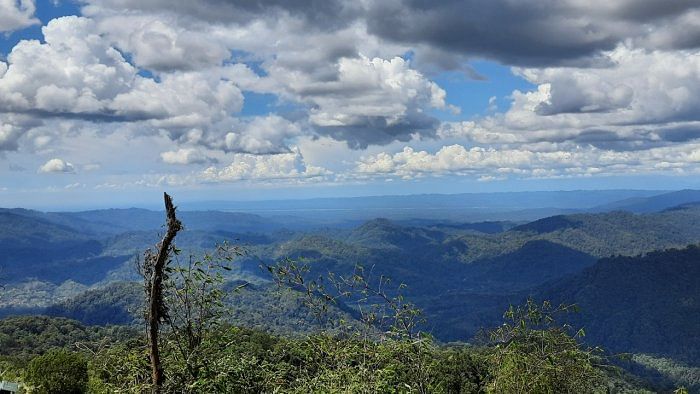
Hearing media reports about the five hydropower projects in Arunachal Pradesh being fast-tracked triggered fears in Gobin Pegu, a farmer at Silapathar, a small town in North Assam. Dams that have already been constructed have increased flooding in downstream areas like Silapathar he says.
"Our crops get destroyed and houses submerged due to the sudden release of water from such dams, even though there is no rainfall in our areas," the 65-year-old farmer belonging to the Mishing community says.
"More dams mean more problems for us," he explains when asked about the possible impacts of power projects.
The Centre is gearing up to harness the potential of hydropower in Arunachal Pradesh in a bid to reduce dependence on fossil fuels. As a result, fear about the adverse impact of large power projects has only deepened.
The state government announced on January 10 that an action plan had been prepared to commence work on 13 "priority projects" with 12,343 MW capacity. This would lead to an investment of Rs 1.5 lakh crores and generate a revenue of Rs 2,000 crore for the state.
Not just power projects, the construction of new highways, railway tracks, bridges, and tunnels in the ecologically sensitive Himalayan regions have contributed to increasing instances of flash floods and landslides. In 2022 alone, more than 100 people were killed in landslides in Manipur, Arunachal Pradesh, Assam, and Meghalaya.
A portion of a hill collapsed and killed 61 people, mostly construction workers building a railway yard in Manipur's Noney district in June last year. A study revealed that the collapse was caused due to unscientific and haphazard cutting of the soil. The project was rushed to meet the deadline for the execution of the Imphal-Jiribam railway project— a part of the Centre's Act East Policy to connect Manipur with the ASEAN nations for more "prosperity" in the region.
Experts say that landslides are not new in the Northeast but changing precipitation patterns due to possible climate change impact and heavy construction work are aggravating the problem. “Heavy rainfall in a short period of time is becoming the norm, rather than the continuous drizzle that the region was known for. Our existing infrastructure was not built to withstand such intense weather anomalies," says Rituraj Phukan, a climate activist in Assam.
Akhil Gogoi, an MLA belonging to Raijor Dal, a regional party, fears that a "major tragedy is waiting to wreak havoc in the Northeast, which is situated in the seismically active zone V," Gogoi says. He demands that all such big projects must be scrapped. Instead, mini multi-purpose hydro projects can meet power requirements, he suggests. Gogoi is not part of the BJP-led government in Assam.
The anti-dam agitation had stalled work on the 2,000 MW Subansiri Lower hydro project along the Assam-Arunachal Pradesh border between 2011 and 2019. The work on the project, however, is now in its final stage and the government is likely to inaugurate it soon.
Development vs disasters
June 27, 2022: At least 61 persons died and 18 were injured in Noney, Manipur after a hill collapsed and buried an under-construction railway yard.
May 15, 2022: Heavy rains caused massive landslides and flash floods in Assam's Dima Hasao district in which Haflong station and two trains were half buried under the debris. Rail networks between Assam and the rest of Northeast remained snapped for days.
November 14, 2022: At least 12 workers died after a stone quarry on a hill slope collapsed in Hnahthial district of Mizoram.